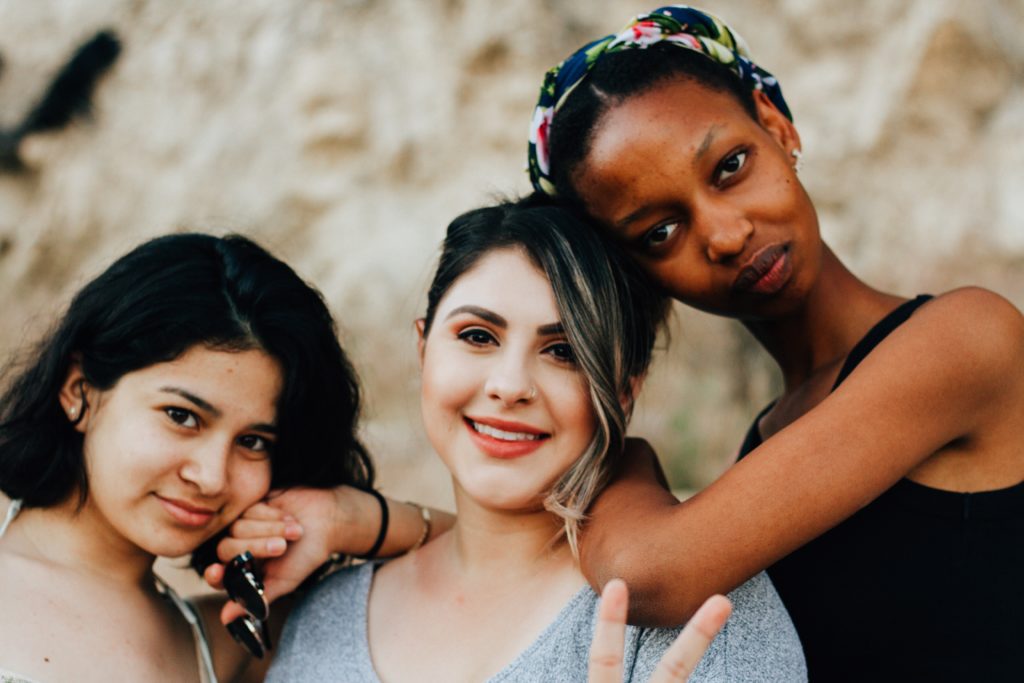Take a peak at our newest guide Conversations in Troubled Times!
Race (Race & Ethnicity Conversation Series)
Conversation Guide
Interested in using this conversation guide? Click here to tell us about it!
We’re happy to help! If you find this guide valuable, please consider making a donation of $5 to help us continue offering free resources.

The expressed American ideal is the creation of a society that is fair and has opportunity for all, regardless of individual or group identity. Even as we work to build a nation that reflects those ideals, there are challenges to living into its fullest expression. This conversation series is an opportunity to explore our varied experiences of race and ethnicity in the American context. Where are we and what do we aspire to for ourselves and our communities?
For additional training materials, please review our Talking About Race resources here: https://livingroom.s052.wptstaging.space/talking-about-race/
Background Information:
(This is the first conversation in our Race & Ethnicity series of three conversations. You can check out the second one here and the third one here.) You can also listen to a podcast recording of this conversation here. Definitions: In the American context, “race” and “ethnicity” are complex terms that are often used interchangeably. These terms were initially separated to designate “race” as a biological quality and “ethnicity” as a cultural phenomenon.For the purposes of deeper exploration, these Guides make deliberate distinctions between these two identifiers. For this Conversation (part 1 of the 3-part Race and Ethnicity Conversation series), we will focus on race as it is commonly defined. Common definitions of race include:
- A grouping of humans based on shared physical or social qualities into categories generally viewed as distinct by society.
- A group of persons related by common descent or heredity.
- An arbitrary classification of modern humans, sometimes, especially formerly, based on any of a combination of various physical characteristics, such as skin color, facial form, or eye shape, and now frequently based on such genetic markers as blood groups.
- A socially constructed category of identification based on physical characteristics, ancestry, historical affiliation, or shared culture.
Let's Get Started!
Living Room Conversations offers a simple, sociable and structured way to practice communicating across differences while building understanding and relationships. Typically, 4-6 people meet in person or by video call for about 90 minutes to listen to and be heard by others on one of our nearly 100 topics. Rather than debating or convincing others, we take turns talking to share, learn, and be curious. No preparation is required, though background links with balanced views are available on some topic pages online. Anyone can host using these italicized instructions. Hosts also participate.
Introductions:
Why We're Here (~10 min)
Each participant has 1 minute to introduce themselves.
Share your name, where you live, what drew you here, and if this is your first conversation.
Conversation Agreements:
How We'll Engage (~5 min)
These will set the tone of our conversation; participants may volunteer to take turns reading them aloud. (Click here for the full conversation agreements.)
- Be curious and listen to understand.
- Show respect and suspend judgment.
- Note any common ground as well as any differences.
- Be authentic and welcome that from others.
- Be purposeful and to the point.
- Own and guide the conversation.
Question Rounds:
What We’ll Talk About
Optional: a participant can keep track of time and gently let people know when their time has elapsed.
Round 1:
Getting to Know Each Other (~10 min)
Each participant can take 1-2 minutes to answer one of these questions:
- What are your hopes and concerns for your family, community and/or the country?
- What would your best friend say about who you are?
- What sense of purpose / mission / duty guides you in your life?
Round 2:
Race and Ethnicity (~40 min)
One participant can volunteer to read the paragraph at the top of the web page.
Take ~2 minutes each to answer a question below without interruption or crosstalk. After everyone has answered, the group may take a few minutes for clarifying or follow up questions/responses. Continue exploring additional questions as time allows..
- What qualifications do you use to determine a person’s race?
- What is an early memory of race (not necessarily racism)? Or what is a powerful memory of race that still informs how you navigate relationships where race is a factor?
- Was that memory of race a positive or negative experience for you?
- Do you feel your race impacts your daily life? If so, how?
- Were conversations about race a part of your upbringing? If so, how was the subject approached? How did the people around you talk about other races?
Round 3:
Reflecting on the Conversation (~15 min)
Take 2 minutes to answer one of the following questions:
- In one sentence, share what was most meaningful or valuable to you in the experience of this Living Room Conversation?
- What new understanding or common ground did you find within this topic?
- Has this conversation changed your perception of anyone in this group, including yourself?
- Name one important thing that was accomplished here.
- Is there a next step you would like to take based upon the conversation you just had?

